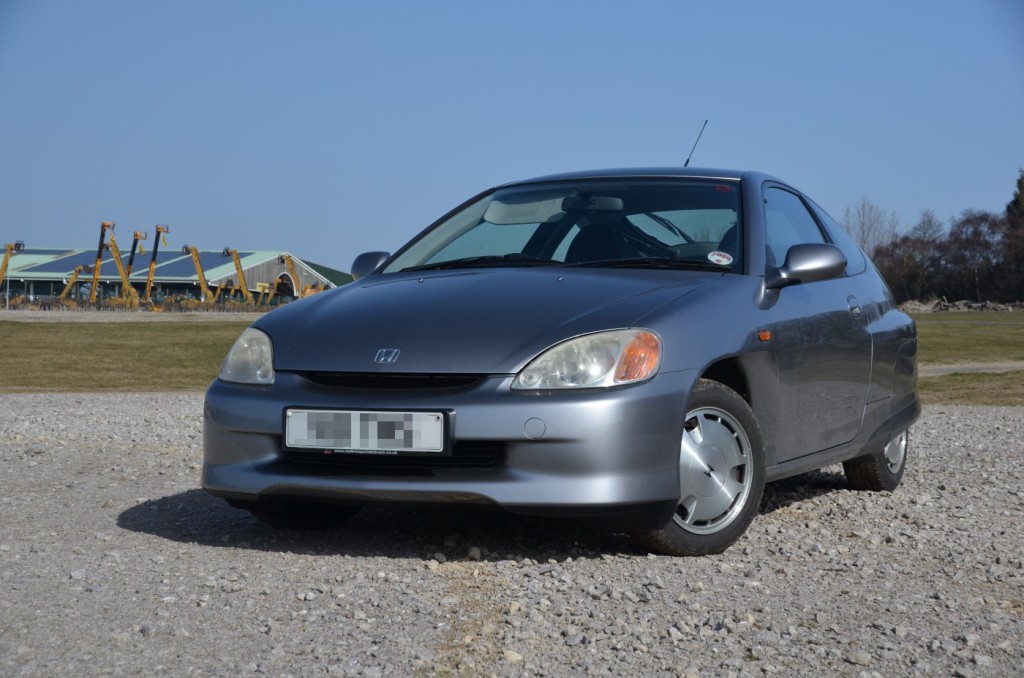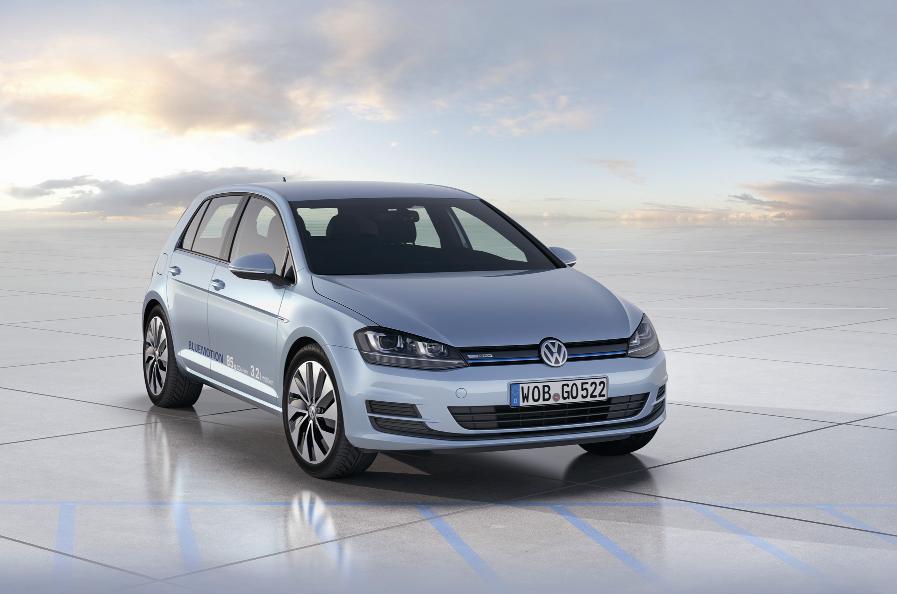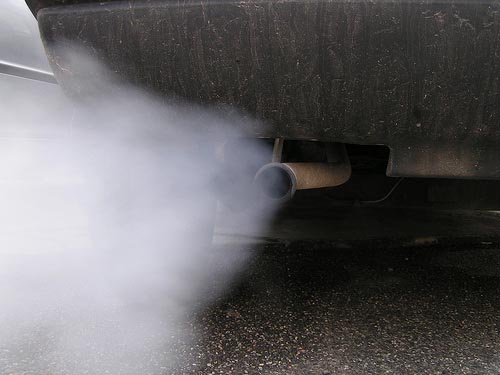You've probably heard it at some point: A friend claims his older vehicle is far greener than the new car with much higher fuel economy you just bought
That's because, he says, the old car didn't require all the energy and natural resources your car consumed as it was built.
But is that older car really greener?
The short answer: No.
The longer answer is also 'no', but it may help educate your friend on why that beloved 20-year-old rattletrap isn't as green as he likes to think.
The environmental cost of manufacturing
It's easy to see why many people think that running an old car would be greener than regularly buying new ones.

2001 Honda Insight
Building a new car is an energy- and resource-intensive process. You need to mine ore out of the ground and oil from the earth or sea, turn them into the raw materials for vehicle parts, turn those supplies into actual components, and then assemble the resulting parts into a car.
At the end of it all, you've got a rolling ton or more of metal, plastic, glass, and rubber that didn't exist before. That carries an environmental cost long before the car turns a wheel.
But it's here that we return to a 2000 study by M.A. Weiss et al., entitled On The Road In 2020: A life-cycle analysis of new automobile technologies.
The study reveals that fully 75 percent of a car's lifetime carbon emissions stem from the fuel it burns, not its production. A further 19 percent of that is production and transportation of the fuel, leaving just six percent for the car's manufacture.
These figures vary--a more recent Volkswagen study suggests that with vehicle efficiency rising steadily, 68 percent of the car's lifetime emissions came from driving it, while the manufacturing process accounts for a higher 22 percent.
Some of this discrepancy is down to the VW in question, an ultra high-efficiency model available in Europe. The less energy a car consumes through its lifetime, though, the less that fuel use contributes to its lifetime emissions.

Volkswagen Golf TDI BlueMotion
The numbers
We can actually work out the relative merits of running an old car and a newer, more efficient one. The numbers show why it becomes better to buy a new car rather than keep an older one running.
Let's say you drive an older car that does 30 mpg, and you drive 15,000 miles per year. The newer car does 40 mpg--as many modern compacts can, or will shortly.
During those 15,000 miles, your old car will use 500 gallons of gas. The newer car: 375 gallons.
That 30 mpg is also about 290 grams per mile of CO2; 40 mpg works out as 217 g/mi. Over the course of the year, the old car will emit 4.35 tons of CO2, the newer car 3.25 tons.
But if you've been running the older car for 10 years, it has emitted over 43 tons of CO2 before the new car has even been built. That number will keep on going up, so bear that in mind if you drive something made in the 1990s or earlier.
MORE: Five Big Myths About Green Cars And Gas Mileage, Debunked
According to The Guardian, citing How Bad Are Bananas? The Carbon Footprint of Everything by Mike Berners-Lee, a minicar has a production footprint of around 6 tons of CO2 equivalent. A larger car--a Ford Fusion--is about 17 tons before it hits the road.
If we assume our 30- and 40-mpg compacts both account for about 12 tons of CO2 during production, it's easy to work out just how long it would take for a new car to offset its production.
In its first year, the new car is responsible for 15.25 tons of CO2 (12 for production, 3.25 during use). That's about 3.5 years of using the old car at 30 mpg, in terms of carbon emissions.
Of course, the older car's production also adds to its tally--and it's less likely that older vehicle included as many recycled materials, or were built as efficiently as the newer car.

Honda CRX
Ultimately, by the time the 30-mpg car is 10 years old, it's been responsible for 55.5 tons of CO2, and that amount continues to accrue at a faster rate than those of the new car.
You could run it for 3.5 years before the production and first year's use of a new car matched it--but ultimately, its 10-year lifetime produces far greater emissions than those of a new vehicle.
Caveats
There are huge variables in such calculations, of course.
If your old car already does 40 mpg, for example--maybe you have a flyweight Honda from the early 1990s--then it will have produced much lower lifetime carbon emissions and the new car will take longer to catch up.
But it's worth pointing out that in terms of emissions other than carbon dioxide (CO2), that old car is far more polluting than a modern vehicle.
Less stringent emissions standards from the 1990s and before permit far more unburned hydrocarbons, oxides of nitrogen, and carbon monoxide per mile to be emitted than in today's cars.

Tailpipe Emissions
If for some reason you trade from that old 40-mpg Honda to a modern car that does only 35 mpg, then while the older car's lifetime tally will start higher, the newer car will eventually reach a point where the older car's emissions are lower.
Again, that is, if you ignore the cleanliness of those lower tailpipe emissions.
Then there's maintenance--a newer car will typically use less oil, require fewer new parts and require less intensive maintenance than an older one. That older one will be consuming other resources, not just fuel, throughout its life.
Finally, it can't be overstated that production of a vehicle is inherently an energy-intensive process. Once iron ore is extracted from the ground, it cannot be put back--the new car is ultimately another vehicle on the road that wasn't there before.
In developed countries--the U.S., most of Europe, and Japan--vehicle population is now close to static. For several years during the recent recession, the U.S. actually scrapped more cars than were sold new, meaning vehicle population actually declined.

Traffic in China
But with 1.2 billion vehicles on the planet today, and the total rising to perhaps as much as 2 billion by 2035, the overall emissions burden is clearly rising. Nonetheless, that doesn't affect your friend's old car's emissions--which remain higher over its lifetime than your new car's.
New still beats old
All the data show that a car's lifetime energy use for propulsion, meaning the fuel or energy that it consumes to move itself about, accounts for a far greater proportion of its lifetime environmental impact than its production.
It's great that your friend likes her old car. Kudos to her for keeping it running, rather than letting it rot into the earth.
There are many reasons to run an old car--character, driving sensations, looks, and the memories of the journeys you've accomplished.
And, to be fair, the car you own is usually going to be cheaper than buying a whole new vehicle--financial reasons count for a lot.
But unfortunately, running an old car because it's greener isn't one of those reasons.
New cars, in that respect, will always be better than old ones.
_________________________________________













